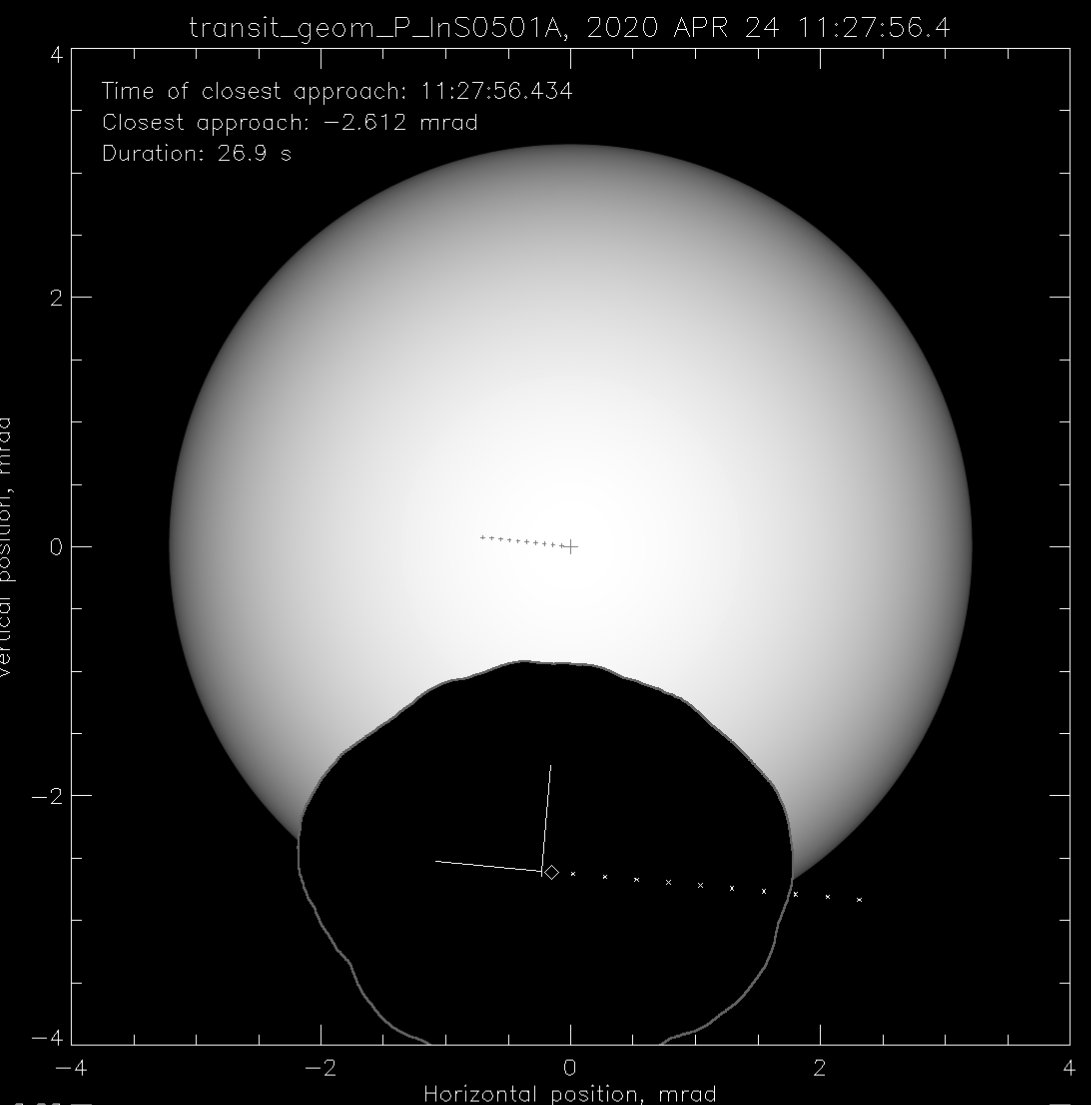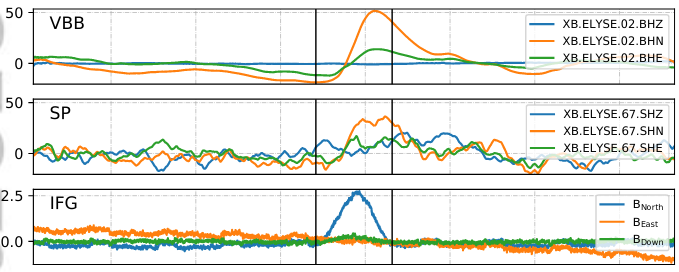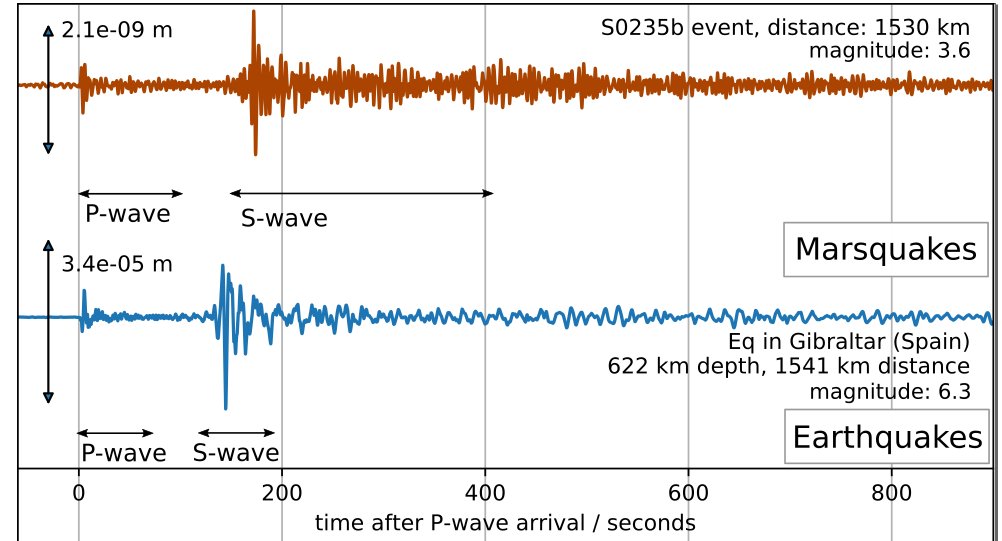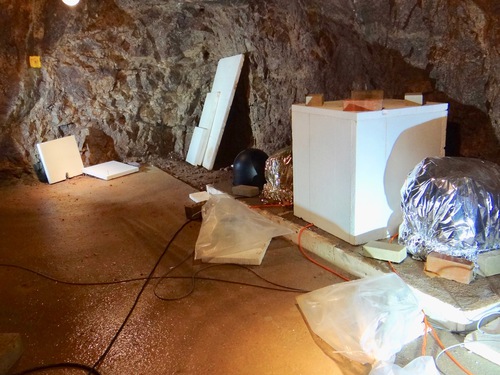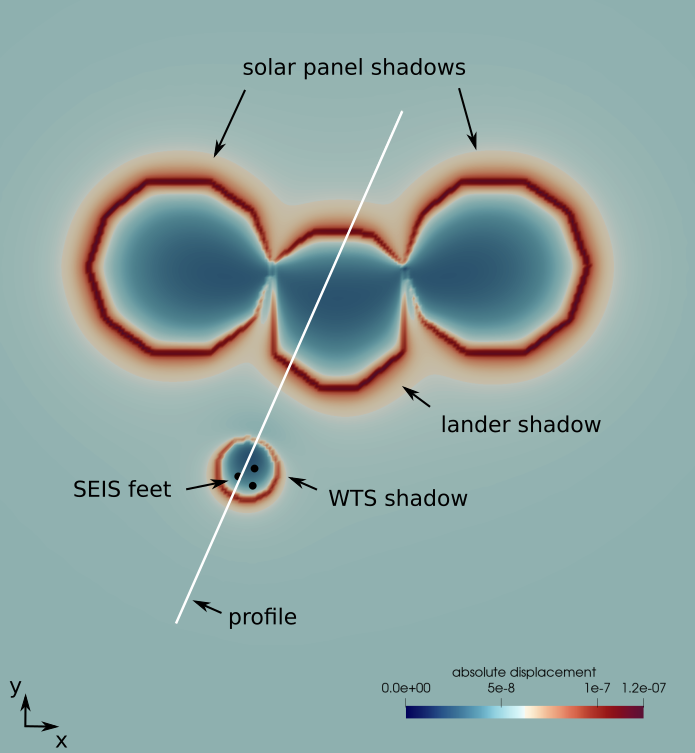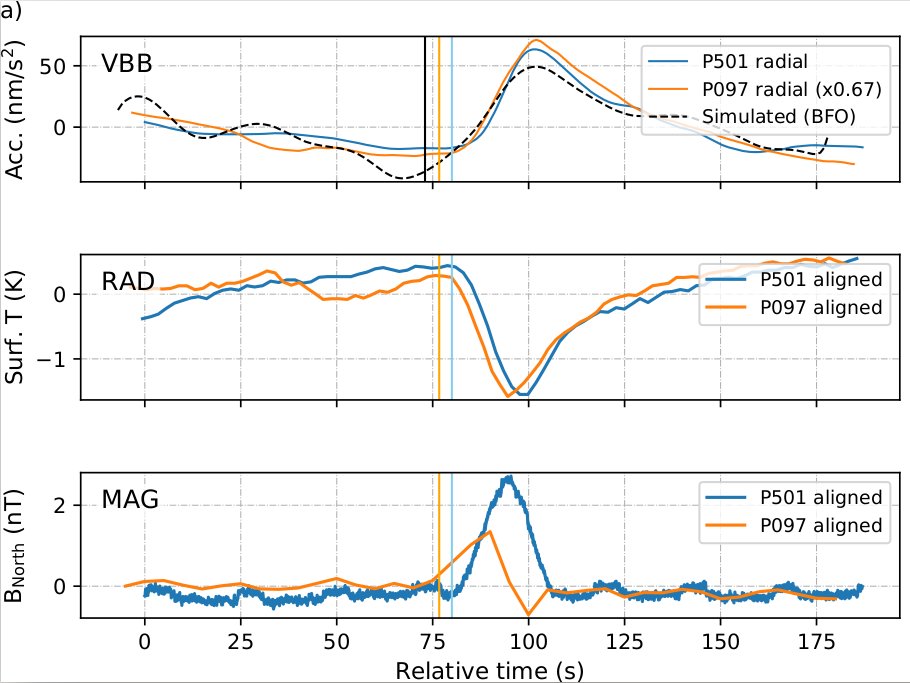New paper on the Phobos transit observed by @NASAInSight on April 24 2020 with some surprises.
THREAD https://onlinelibrary.wiley.com/share/author/QQGDEE8RSCHX6CQ2AAXT?target=10.1029/2020GL089099
THREAD https://onlinelibrary.wiley.com/share/author/QQGDEE8RSCHX6CQ2AAXT?target=10.1029/2020GL089099
First off: Eclipse or transit? We decided to go with transit, since the transiting body (Phobos) is much smaller than the main body (Sun) in this case.
Visualization by Mark Lemmon (Space Science Institute)
Visualization by Mark Lemmon (Space Science Institute)
Little surprise that the Solar Arrays produces less power during the 32 second transit. Less solar influx -> less power. Great idea by Ralph Lorenz ( @JHUAPL) to use them for science! https://twitter.com/NASAInSight/status/1257747075967512576
There's no way to confuse this with an actual marsquake, which produces completely different waveforms, with P-waves, S-waves and scattered energy in between; much similar to Earthquakes (ask John Clinton, Domenico Giardini @seismoCH_D for details)
Gravitational pull from Phobos is also much too small, otherwise we would see it every time it passes over InSight (every 5.5 hours). We will need to stack the data from thousands of Phobos passes to see this signal on the seismometer (Philippe Lognonné's dream @IPGP_officiel).
So what else? Ruedi Widmer-Schnidrig (Black Forest Observatory @KITKarlsruhe) remembered that he once saw a signal on a seismometer hidden deep in a mountain the instance he switched on a light bulb nearby.
The seismometer itself was shielded against the IR radiation of the light bulb. But the ground was not. So, the little energy of an incascendent light bulb shining on ground is enough to heat the uppermost millimeters such that it deforms, tilting the seismometer slightly.
Could this be the explanation for the signal seen by @InSight_IPGP? FEM modelling by Ken Hurst ( @NASAJPL) and Martin van Driel ( @ETH_ERDW) showed that yes: The temperature drop of 2 K outside the thermal shield (WTS) is enough to deform the ground as observed*.
But what about the magnetometer signal? Anna Mittelholz and Catherine Johnson ( @UBCeoas) showed that the small change in solar array current induces a magnetic field that was picked up by the magnetometer. Parasitic signal at first, but...
... Anna and John-Robert Scholz ( @MPSGoettingen) could show that we can use this high resolution data to time an earlier Phobos transit (Sol 97) more exactly and thus work towards determining Phobos' orbit parameters better.
Important, if you want to land there, as @JAXA_en is planning in two years, but also to measure precisely, by how much tides decelerate Phobos. This in turn will be used by Laurent Pou and Francis Nimmo ( @ucsc) to constrain the rheology of the Martian mantle.
To summarize: Non of these observations were planned when @NASAInSight was built. But it shows what you can do if you have a boring, but super-precise geophysical observatory on another world and a great team curious to research the hell out of it.
Many more detailed contributions from @aymeric_spiga, @MarkPanning and many others. Great fun to finish this study so quickly!

 Read on Twitter
Read on Twitter